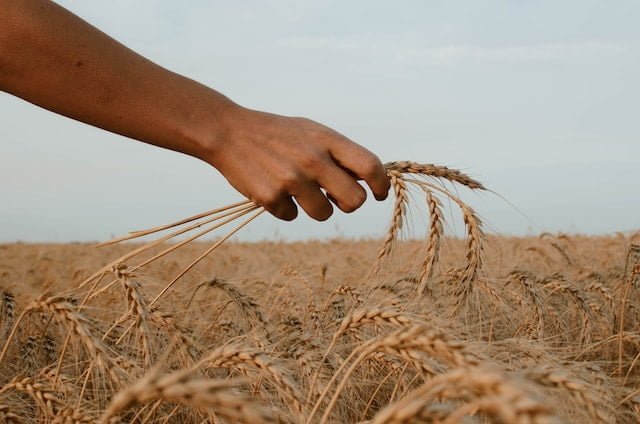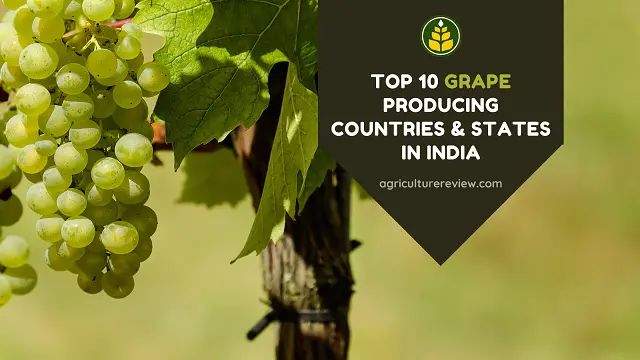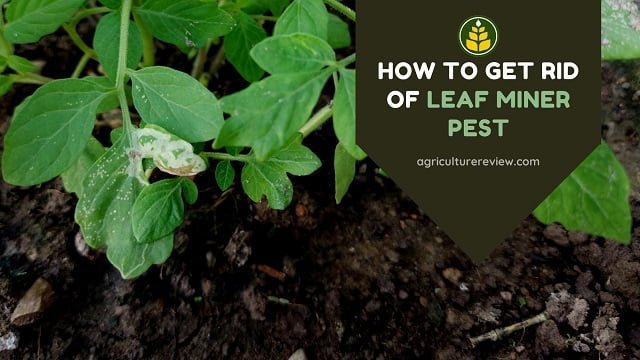Learn wheat farming on Agriculture Review. Get to know about sowing time, soil requirements, field preparation to harvesting process. Moreover, you will also get to know origin of wheat, leading producers, etc.
As we know wheat is the most ancient crop in the world. It is also considered as the second most important staple food in the world. Many big countries like India and China are the leading producer as well as consumer of the wheat.
Wheat flour is used for making cookies, biscuits, chapatti, bread, etc. Moreover, wheat is also used to prepare malt, starch, distilled spirit, and gluten. Wheat bran can also be used to feed livestock as it is found rich in protein.
If you are a farmer and you do all the necessary activities in the field perfectly then you can earn nearly twice the input cost. But, this is mostly possible if you have large land holdings.
Table of Contents
Profit and Income in Wheat Farming
According to the inputs by agrifarming.in, the cost of input for wheat farming in one acre of land will be around 12, 210 Indian Rupees. And if the farmer gives his 100% in the farm by following our ways then he or she can earn around 27, 600 Indian Rupees.
Hence the net profit will be around 15, 390 Indian Rupees within 3 to 4 months. This is only possible if the farmer purchases the best variety seeds, adopt healthy farm practices, and sells his product wisely in the market.
The total input cost includes the cost of seeds, sowing of seeds, field preparation, fertilizers and pesticides, harvesting, transportation, etc. In one acre of land a farmer can reap around 15 quintals of wheat. Therefore, if the minimum support price is 1,840 Indian Rupees then a farmer can earn around 27, 600 Indian Rupees.
However from country to country this price can vary depending on the input cost and market demand. Let’s now understand about wheat and its farming guide in detail.
Botanical Classification of Wheat
Botanical Name: Triticum aestivum
Family: Poaceae
Order: Poales
Class: Liliopsida
Division: Magnoliophyta
Chromosome Number: 42
Source: www.cs.mcgill.ca
Origin of Wheat
Among the earliest domesticated crop, wheat is the first cereal crop that we started domesticating in the past. Researchers believe that origin of wheat is somewhere in Southwest Asia. Neolithic period is marked with the cultivation of wheat.
From the beginning of farming era, wheat is the main source of food in Middle East and Europe. Later on, it spread to many parts of the world.
Area & Production
627 Million tonnes of wheat is produced every year in the world. And the total world area for wheat farming is 215 million hectares. China is the leading producer of wheat in the world. It produces around 91 Million tonnes of wheat every year.
Whereas land used for wheat cultivation in China is around 21,730,100 hectares. And in India 26,620,000 hectares of land is used for cultivation of wheat. Therefore, India is world leader in wheat acreage. India produces around 72 Million tonnes of wheat every year.
Apart from China and India, other major wheat producing countries are Russia, United States of America, Canada, Germany, Ukraine, Pakistan, Australia, Argentina, etc.
The average crop yield is highest in Germany. It is 8,170 Kilograms per hectare.
Source: ikisan.com
Wheat Farming Guide
Now I am going to provide you all the necessary details that you need to know for cultivation of wheat. I will discuss step by step on soil requirements, Climate and Temperature, Field preparation, Manures and Fertilizers, Irrigation, Weeding, Pest and Disease, etc.
This guide will help you to understand the complete process for cultivation of wheat.
Soil Requirement
You can cultivate wheat in a wide range of soil. However, clay loam to loamy soil that is rich in organic matter and have moderate water holding capacity is fit for wheat farming. But, avoid growing wheat in sandy soil.
Water logged or soggy soil can damage roots of the wheat crop. That’s why maintaining proper drainage facility is necessary. Irrigation frequency also varies according to the soil type. However, if the soil pH is in the range of 6.0 to 7.0 then it is good for growing wheat.
Treatment of soil is also necessary. You can treat the soil with Azatobacter (2.5 Kilograms) + Phophetica culture (2.5 Kilograms) + Trichoderma powder (2.5 Kilograms). Mix all these ingredients with 125 Kilograms of Farm Yard Manure. You can apply this at the last time of ploughing.
Climate and Temperature
You can grow wheat in wide variety of agro-climatic zones. From temperate regions to sub-tropical and tropical regions, is fit for cultivation of wheat. Wheat crop can even tolerate snow. It loves moist and cool weather during the growth stage.
For better seed germination temperature range of 20 to 25 degrees celsius is good. But, the seeds can also germinate within temperature range of 4 to 35 degrees celsius.
Avoid cultivation of wheat in regions having too high or too cold temperature range.
Seed Rate and Treatment
For Timely Sown Variety: 100 – 125 Kilograms per hectare
For Late Sown Variety: 125 -150 Kilograms per hectare
Before sowing treatment of seeds is very necessary. Untreated seeds are prone to many seed borne diseases. You can treat seeds with Vitabax or Thiram @3 grams per Kilogram of seed before sowing.
You will also love reading these aricles,
READ MORE: RICE FARMING GUIDE: FROM SOWING TO HARVESTING
READ MORE: CABBAGE FARMING GUIDE: FROWM SOWING TO HARVESTING
Field Preparation
Field preparation is a necessary step for wheat farming. You can use mould board or disc plough to deep plough the soil. This can be followed by 2 to 3 harrowing with disc or tines. At last 2 to 3 planking is necessary.
You can add the first doze of fertilizers along with Farm Yard Manure at this time. You can also add Jeevamrut or Waste Decomposer to save your crop from pest and to improve soil fertility.
Sowing Time & Spacing
In tropical to subtropical regions the best sowing time for wheat is around November to December. While in temperate or hilly regions you can start sowing of seeds from April to May depending on variety of the seed and temperature.
You can sow the seeds in lines or by broadcasting. Sow the seeds at the depth of 6 centimetres in the soil. Maintain row to row distance of 15 to 20 centimetres and plant to plant distance of 5 centimetres.
Manures and Fertilizers
At the time of preparation of field add 5 to 10 tonnes of Farm Yard Manure or any organic compost per hectare. Although you will also need to add dozes of inorganic fertilizers in the required amount to get high yield.
Fertilizer Doze (Per Hectare)
| Fertilizer Name | Irrigated | Late Irrigated | Rainfed |
| Urea | 150 Kg N | 120 Kg N | 60 Kg N |
| Super Phosphate | 60 Kg P2O5 | 40 Kg P2O5 | 30 Kg P2O5 |
| Muriate of Potash | 40 Kg K2O | 20 Kg K2O | 20 Kg K2O |
Although the best practice is to get the soil tested. Soil testing helps to plan the fertilizer doze efficiently. Add half doze of Urea and the complete dozes of Phosphate and Potash at the time of sowing. You can add 50% of the left urea during first irrigation after sowing.
And add the rest quantity of urea during second irrigation by top dressing method. If you do not want to use any inorganic fertilizers then you can use waste decomposer weekly for best results.
Irrigation
Irrigation is an important step for cultivation of wheat. Hence you should definitely know application of water and timing.
| Irrigation | Days after Sowing (DAS) | Stage |
| 1st Irrigation | 20 to 25 DAS | Crown root-initiation stage |
| 2nd Irrigation | 40 to 45 DAS | Tillering stage |
| 3rd Irrigation | 70 to 75 DAS | Late jointing stage |
| 4th Irrigation | 90 TO 95 DAS | Flowering stage |
| 5th Irrigation | 110 to 115 DAS | Dough stage |
Pest and Disease
If you not care well then your wheat crop can get affected from pest and disease. Pest like aphids, mites, white ants, stem borer, rodents, grasshoppers etc. and diseases like loose smut, bunt, wheat rust, etc. can harm your crop.
Keep checking for any of these pests and diseases. For their control visit nearest agriculture centres. They can easily provide you best alternative for their control.
Disease and Management
| Disease | Management |
| Loose smut and Bunt | Seed treatment with Thiram before sowing |
| Rust | Spray Dithane M-45/ Indofil M-45 @2Kg in 600 litres of water per hectare, or dusting with sulphur 25 Kg per hectare |
Harvesting
When leaves and stem of the crop start turning yellow then you can start harvesting your crop. The other signal is the moisture content of the wheat, if it is 25 to 30% then you can harvest the crop. However, time of maturity reaches earlier in rainfed crop.
F.A.Q. On Wheat Farming
What type of soil is good for growing wheat?
Clay loam to loamy soil is considered good for growing wheat. However, soil pH should be around 6.0 to 7.0 and it should have moderate water holding capacity.
What temperature is needed for wheat cultivation?
You can grow wheat in temperate, sub-tropical to tropical regions. Temperature range of 18 to 25 degrees Celsius is ideal for wheat cultivation. However, it can also be practiced in areas having temperature range of 4 to 35 degrees Celsius.






